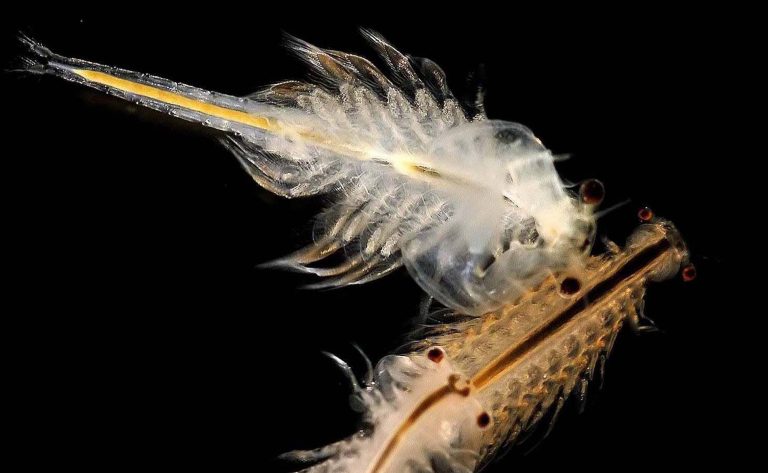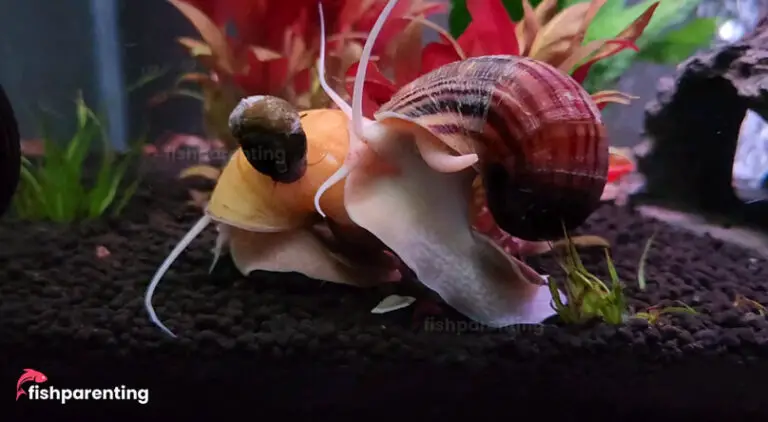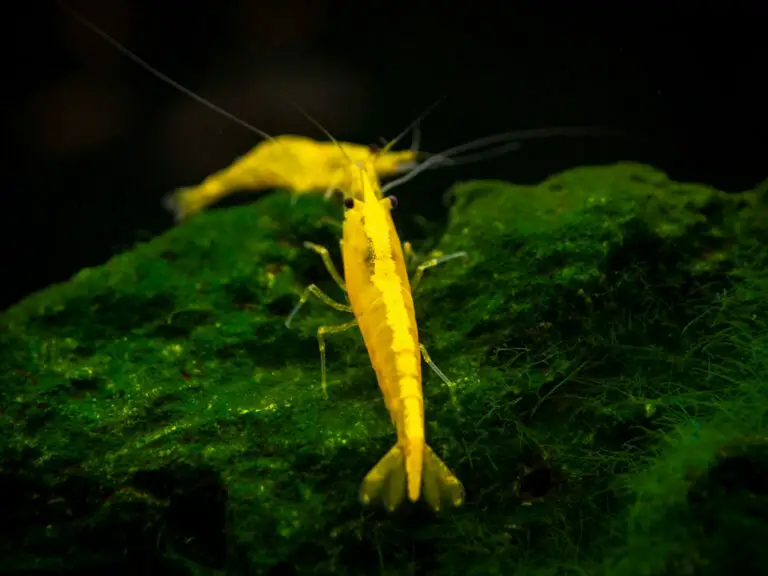Does Hydrogen Peroxide Kill Beneficial Bacteria in Aquarium?
Yes, hydrogen peroxide does kill beneficial bacteria in aquariums. The chemical reaction of hydrogen peroxide with water creates oxygen and water molecules which can be toxic to aquatic organisms. If the concentration of hydrogen peroxide is too high it will not only damage beneficial bacteria but also other organisms such as fish and invertebrates living in the aquarium.
It is important to use low concentrations when adding hydrogen peroxide to an aquarium, ideally no more than three parts-per-million (ppm). Moreover, allowing time for the oxygen bubbles created by the reaction to dissipate before adding any fish or invertebrates back into the tank will help reduce stress on these animals caused by sudden changes in their environment due to oxygen levels that are too high.
Hydrogen peroxide is a widely used chemical in aquariums, as it can help to kill potentially harmful bacteria and algae. However, recent studies have shown that hydrogen peroxide can also be detrimental to beneficial bacteria in an aquarium, such as nitrifying bacteria which help with filtration. The use of hydrogen peroxide should therefore be carefully monitored so that the concentration does not exceed what the beneficial bacteria can tolerate.
It’s best to always err on the side of caution when using any chemicals in your aquarium and consult with your local fish store for advice before proceeding.
Hydrogen Peroxide Aquarium Dosage
When dosing your aquarium with hydrogen peroxide, it is important to do so cautiously. Hydrogen peroxide should be added in small doses – 1mL of 3% hydrogen peroxide for every 10 gallons of tank water. This will help to jumpstart the beneficial bacteria and increase oxygen levels, but avoid any drastic changes that could cause harm to the fish and other organisms living in the aquarium.
It is best to consult an expert before administering any form of medication or supplement into your freshwater tank.
How Long Does Hydrogen Peroxide Last in Aquarium
Hydrogen peroxide is a great way to kill off unwanted bacteria and help keep your aquarium clean. However, since hydrogen peroxide breaks down quickly once it’s exposed to light or air, you should only use it for short-term treatments in the aquarium. Typical treatments last anywhere from 15 minutes to an hour and should be done no more than once every two weeks.
It’s important not to overuse this chemical as it can disrupt the delicate balance of organisms in your tank and do more harm than good.
Too Much Hydrogen Peroxide in Aquarium
Having too much hydrogen peroxide in your aquarium can have detrimental effects, such as killing fish and invertebrates due to oxygen deprivation. Hydrogen peroxide levels should be monitored regularly, and if levels are found to be high, steps should be taken immediately to reduce them back down. These include increasing water circulation, reducing the amount of organic waste in the tank, or using a chemical filtration medium such as activated carbon or zeolite.
Hydrogen Peroxide Algae Spot Treatment
Hydrogen peroxide is an effective spot treatment for algae in aquariums. When used correctly, it can help reduce the amount of algae without harming plants or fish. It works by reacting with the cell walls of algal cells and releasing oxygen which kills them off.
To use hydrogen peroxide as a spot treatment, mix one part 3% hydrogen peroxide to five parts water in a clean container and then apply this mixture directly onto the affected areas using a soft brush or cloth.
How Long Does It Take for Hydrogen Peroxide to Kill Algae
Hydrogen peroxide is a great way to quickly kill algae and keep your pond, pool, or aquarium clean. When added to the water at a concentration of 3%, it can take as little as 30 minutes for hydrogen peroxide to start killing off any algae present in the water. Depending on how much algae there is and other environmental factors, it may take up to an hour for all traces of the algae to be eliminated from the water.
Is Hydrogen Peroxide Safe for Fish Tanks
Yes, hydrogen peroxide is safe for fish tanks as long as it is used in the correct amounts. It can help control algae growth and bacteria, and can be safely used to treat diseases such as ich or fin rot. However, it should never be added directly to a tank without first being diluted with water because its high concentrations could damage plants and cause harm to your fish.
When using hydrogen peroxide in aquariums, always follow the instructions on the packaging and use only small amounts that are appropriate for your particular tank size.
Cyanobacteria Aquarium Hydrogen Peroxide
Cyanobacteria is a common occurrence in aquariums, and hydrogen peroxide (H2O2) is an effective way of removing it. Hydrogen peroxide works by oxidizing the cyanobacteria cells, killing them off without harming other beneficial bacteria or aquatic life in your tank. When using hydrogen peroxide to treat cyanobacteria blooms, it’s important to ensure that you use the correct concentration and monitor the water parameters closely afterwards.
Hydrogen Peroxide for Algae in Aquarium
Hydrogen peroxide can be an effective way to treat algae in aquariums. It works by oxygenating the water and killing off any existing bacteria or parasites that could be contributing to the algae’s growth. When used correctly, it is safe for fish and other aquatic life.
Be sure to always follow instructions carefully when using hydrogen peroxide as it can cause harm if not done properly.

Credit: www.myaquariumclub.com
Will Hydrogen Peroxide Kill Beneficial Bacteria?
Hydrogen peroxide (H2O2) is a common household cleaner that can be used to disinfect surfaces and kill bacteria. However, it is important to note that H2O2 can also kill beneficial bacteria. Beneficial bacteria are the microorganisms found in certain environments that help keep our bodies healthy and functioning properly by breaking down food for energy, synthesizing vitamins, aiding digestion, and protecting us from harmful pathogens.
Although hydrogen peroxide has been proven effective in killing many types of pathogenic bacteria such as staphylococcus aureus or E. coli, it can also cause damage to beneficial bacterial colonies if not used correctly. When using hydrogen peroxide as a cleaning agent or disinfectant, it is best to dilute the solution with water before use so as not to harm any beneficial bacteria present in the environment. Additionally, when possible try avoiding contact between hydrogen peroxide and your skin or mucous membranes since this could lead to irritation or infection due to destruction of good microbes on the body’s surface.
In conclusion, while hydrogen peroxide does have its uses for killing dangerous germs and preventing infection; caution should be taken when using this product around beneficial bacterial colonies since improper use could result in destruction of these important microscopic organisms which play an essential role in maintaining human health.
Will Hydrogen Peroxide Kill Bacteria in Aquarium?
Hydrogen peroxide can be used to kill bacteria in aquariums, and it can even help prevent the spread of disease. While hydrogen peroxide is not typically considered a suitable substitute for water changes, it can still be incredibly effective at killing any unwanted bacteria in your tank. The most common way to use hydrogen peroxide is by adding three milliliters of 35% grade solution for every ten gallons of aquarium water.
It’s important to note that this should only be done if you have tested the water beforehand or if there are clear signs of bacterial infection in the tank such as cloudy or discolored water. Additionally, once you add the hydrogen peroxide make sure to wait 30 minutes before turning on any filtration systems or aeration pumps as these could cause oxygen bubbles which could harm fish and other inhabitants living inside your tank.
Is Hydrogen Peroxide Harmful to Aquarium Fish?
Hydrogen peroxide is a commonly used household cleaner, but when it comes to aquarium fish, it can be quite dangerous. While hydrogen peroxide is an effective way to treat many diseases in aquarium fish, the concentration required for this treatment can also have negative effects on their health. Too much hydrogen peroxide can damage the delicate balance of your tank’s ecosystem and potentially harm or even kill your aquatic friends.
When using hydrogen peroxide as a treatment for disease in aquarium fish, make sure you dilute it with water first and only use it as directed by your veterinarian or other pet care professional. Additionally, if you are using any other solutions such as medications or cleaners that contain hydrogen peroxide in them, make sure they are completely removed from the tank before adding new occupants to prevent any potential issues.
What Kills Beneficial Bacteria in Aquarium?
Having beneficial bacteria in your aquarium is an essential part of maintaining a healthy environment for the fish. However, there are certain things that can kill off these helpful microorganisms. The most common culprits are chlorine and chloramine which can be found in tap water and even well water in some cases.
Chlorine is highly toxic to aquatic life and will quickly eradicate all forms of beneficial bacteria, so it’s important to make sure you’re using a de-chlorinator when setting up or topping off your tank with fresh water. Additionally, sudden changes in temperature, pH levels or salinity can also have serious consequences on bacterial populations as they struggle to adapt to their new environment. In addition to this, high concentrations of nitrates and phosphates caused by overfeeding or inadequate filtration can cause ammonia spikes that will further reduce the numbers of beneficial microbes living inside your tank.
To ensure maximum success with keeping beneficial bacteria alive in your aquarium it’s best practice to only use top quality equipment such as filters and test kits that are designed specifically for aquaria; monitor parameters regularly; perform regular maintenance tasks such as cleaning filter media; feed sparingly avoiding overstocked tanks; provide plenty of oxygenation either via air pumps or surface agitation from powerheads/fountains etc.; avoid drastic changes without allowing time for acclimatization; maintain good general hygiene standards throughout the system – removing dead organisms promptly before decomposition takes place etc., All these measures should help create a stable environment where populations of useful aerobic bacteria like Nitrosomonas & Nitrobacter species responsible for nitrogen cycling within the ecosystem thrive happily!
How to Remove Algae in Your Aquarium Using Hydrogen Peroxide to Safely Treat the Entire Tank
Conclusion
In conclusion, while hydrogen peroxide can be used to disinfect aquariums and kill harmful bacteria, it is important to consider the consequences of overusing this substance. Hydrogen peroxide will not only kill harmful bacteria but also beneficial bacteria necessary for a healthy aquatic environment. Therefore, if you plan on using hydrogen peroxide in your aquarium, make sure to use it sparingly and follow all safety instructions carefully.





